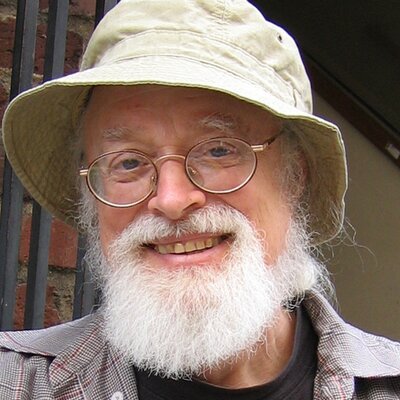Intelligence is usually defined in terms of capacities like the ability to learn, to plan, to recognize patterns and to solve problems. So it has been hard for me – as an advocate of collective intelligence – to come to terms with the profound short-comings of problem-solving.
Problem-solving is universally respected and applied: If there’s a situation we don’t like, we believe it needs to be approached as a problem and solved. If the responsible person fails to solve it well, that’s their fault, not the fault of the problem-solving approach, itself.
In this essay I invite you to consider that problem-solving – as a way of handling troubling situations – has more pitfalls than most of us realize. In an ironic nutshell, there are some problems with problem-solving.
I find the very idea shocking. Problem-solving is so embedded in our thinking and language that it is hard to conceive of addressing challenges without trying to solve them as a problem. The problem-solving worldview is ubiquitous in our culture. I now think that that worldview generates a growing shadow for our civilization – a civilization profoundly dependent on the very problem-solving impulse that is making it increasingly vulnerable!
I’ve been considering how many of today’s “issues” and “crises” are rooted in earlier solutions. Consider, for example, what solution-based Progress looks like when we take account of its downsides:
- Better housing insulates us from “the elements”, thereby serving to alienate us from nature, dulling our instincts and capacity to respond with appropriate insight and urgency to environmental degradations unfolding around us. [ap_spacing spacing_height=”5px”]
- Advanced medical care and provision of calories “solve” hunger and disease while expanding humanity’s environmental impact and frequently undermining deeper dimensions of individual, communal and environmental health. [ap_spacing spacing_height=”5px”]
- Getting efficiently from A to B and acquiring our favorite products has disrupted Earth’s climate, depleted its resources, and generated massive amounts of garbage and toxicity. [ap_spacing spacing_height=”5px”]
- Institutions to support people in need have generated systemic dependency and undermined traditional modes of mutual and communal caring and nurturance. [ap_spacing spacing_height=”5px”]
- The efficiency of money, mass production, mass commodification and mass mobility tend to replace relational interdependence, uniqueness, meaning, reciprocity, community and artisanship. [ap_spacing spacing_height=”5px”]
- Communication technologies have transplanted us from communities of place to virtual networks of like-minded people far away, decreasing local social capital needed for physical communal resilience.
People are busily working on solutions to all the solution-generated problems noted above, while the whole interconnected body of life and its support systems are coming apart. I’m not saying we shouldn’t do things “to improve people’s lives”. I’m saying it seems wise to take better account of the downsides of our current approaches because, as novelist Phillip K. Dick notes, “Reality is that which, when you stop believing in it, doesn’t go away.” What we don’t take into account usually comes back to haunt us, sooner or later.
PROBLEMS WITH LINEARITY
Most of the shortcomings of our problem-solving worldview are grounded in the fact that it is fundamentally linear and the world is fundamentally non-linear. More often than not, the bigger the situation being addressed, the more nonlinear it is and the harder it is to understand, predict and control it. We can add to that challenge the fact that our “successful” problem-solving at smaller scales (like a decision to travel by jet instead of train) is generating ever-vaster problems at larger scales, thanks to how many of us are led to prefer problematic options.
This is one example of how our problem-solving efforts take us on an A-to-B fantasy trip from identifying the problem to finding a solution that makes the problem disappear. We believe in this simple story, even when evidence suggests it is incomplete and misleading. When things go wrong, we think that we (or someone) didn’t solve the problem correctly. We don’t think that there might be some issues with problem-solving, itself. After all, we see it working so well for small, simple, mechanical (non-living) challenges like fixing a flat tire – and even for complicated challenges like sending someone to the moon. (See my writeup of the Cynefin framework.)
Unfortunately, the linearity of problem-solving becomes troublesome when it is applied to large, complex, nonlinear situations and systems. These are the most common types of situation faced by organizations, communities and societies today. They are extremely messy even to try solving and, more often than not, when we implement such a solution we generate “side effects” which often become problems that demand solutions of their own, ad infinitum, as suggested by the bullet list above.
Problem-solvers even have a name for the most problematic problems. They’re called “wicked problems” because they are virtually unsolvable. The more alive and complex a situation or system is, the more it features interactive moving parts, vast influential contexts, autonomous agents, and evolving demands on the solvers, themselves, to dance and transform in ways that make any “solution” temporary, at best. All this interrelational movement thwarts our efforts to nail down The Problem and arrive at a final Solution that actually makes the problem go away.
The effort to apply problem-solving approaches to messy, wicked problems tends to not only fail to work as expected, but to generate hubris and tunnel vision in us as problem-solvers. We become captivated by the heroic narrative of generating clear solutions and thus reluctant to acknowledge how such complex systemic problems tend to have many tangled causes and how our solutions almost always generate new problems. We are inclined to underappreciate, downplay, or fatally ignore the evolving web of factors that make a satisfying solution so elusive. We hang on to our linear sense of problem-solving success.
IS PROBLEM-SOLVING ACTUALLY APPROPRIATE IN THIS CASE?
If we want to use problem-solving approaches wisely, we need to recognize where they may not be appropriate, and to deeply understand why that is. It also helps to know what approaches to use instead.
I offer below a list of some characteristics of situations, conditions and systems that do not respond well to problem-solving. None of them are cognitive deal-breakers or impediments to productive engagement; there are alternative approaches that can help us work with them. For each characteristic, I’ve included examples of approaches that would probably work better than traditional problem-solving. As with so many of my lists, this one is not to be taken as comprehensive, but rather as a doorway into thinking differently about this remarkably nuanced topic.
- If we encounter significant novelty and surprises in the problem domain, we’ll need to use less problem-solving and more openness, curiosity, exploration, and creative prototyping. As we learn more, we MAY be able to shift into problem-solving mode, but always very judiciously. [ap_spacing spacing_height=”5px”]
- Where the problem domain is embedded in contexts – social or natural systems, histories, assumptions, etc., that seem to be in the background but actually shape or are impacted by the problem domain – we can investigate those larger contexts and convene generative conversations among players in them before attempting problem-solving. Often, deeper understanding of the situation and relations among the players will shift the context in ways that cause the original problem to shrink or dissolve entirely. [ap_spacing spacing_height=”5px”]
- Where the problem is linked to other problems – e.g., at different scales, places, times, nodes of systemic causality, etc. – we’d be wise (as above) to undertake investigations and conversations about – and among players in – those related problem domains before even thinking of solving the original problem. Unacknowledged and ignored interconnections between problem domains is a major reason why solutions in one domain create problems in other domains. Of course, the more connections we acknowledge, the more complex we realize “the problem domain” actually is, challenging us to use even less linear approaches. [ap_spacing spacing_height=”5px”]
- Where we find true complexity – in other words, constant interactivity, change, evolution, and emergence happening among elements within the situation – our responses require openness, diversity, fluidity, resilience, “dancing” with change and “surfing” the waves and rapids of change rather than problem-solving. Literally “solving” something in such a situation is futile because any “target“ for our efforts is always moving and morphing, often in response to whatever we do (and even who we are). Ideally, our level of responsiveness would reflect the level of mutual responsiveness unfolding among the other elements in the system. Improvisational dance might be the best metaphor for a workable approach. We would not see ourselves as separate, fight against the interactive energies, or push a prefigured plan. [ap_spacing spacing_height=”5px”]
- In response to significant but intrinsic uncertainties, it is most appropriate to respond with humility, intuition, appreciation, and exploring multiple perspectives in search of recognizable patterns rather than just trying to deny or solve the uncertainties so we can be certain enough to start problem-solving again. [ap_spacing spacing_height=”5px”]
- If we’re confronted by a polarity whose elements are deeply interdependent parts of a dynamic whole – such as freedom/equality, short term/long term, individual/group, etc. – their tension cannot be “solved” in the usual sense. They need to be managed for greater synergy, short-term situational prioritization (where one or the other side of the polarity is temporarily prioritized), and a long-term balance that is dynamic, not static. [ap_spacing spacing_height=”5px”]
- Predicaments – conditions that simply cannot be solved – challenge us to accept what’s going on, to minimize what harms may be associated with those conditions, to change ourselves as needed[*], and to support each other and the healthy functioning of whatever system the predicament is embedded in. In this, we may find the Serenity Prayer helpful: “God grant me the courage to change what I can change, the serenity to accept what I can’t, and the wisdom to know the difference.” [ap_spacing spacing_height=”5px”]
- Finally, Mystery is always present, inviting us to learn or deepen into the implicit awe-inspiring qualities of life and existence. Such learning and deepening can go on forever. Problem-solving is often a way to skip over that dimension of our experience – but we can always shift into Mystery at any time, simply for its own sake (setting aside the whole problem-solving impulse), or to gain perspective (since certain habits or assumptions can limit our view of what’s important or possible), or to make space for more creativity to help our problem-solving become richer and wiser. This may open the door to some of the less linear approaches listed below….
ALTERNATIVE PROCESSES
Some consultants note that the effort to solve problems can lower a group’s energy – despite the fact that some analytically inclined members of the group may enjoy that mode of thinking. Various exercises – creative, physically active, etc. – can be used make group problem-solving more enjoyable.
But that can make an unhelpful activity bearable. Luckily, there are totally different approaches to deal with undesirable conditions – other than problem-solving. These include the following, which I again offer with all my earlier caveats regarding lists! [Any processes not linked herein can be found here.]
- Active or strategic appreciation. This linked essay lists some process resources for this approach as well as this challenge to our imaginations: “What would happen if we deeply understood what was going on, if we saw and were truly grateful for the positive aspects of it and, in addition, if we used that recognition to help those positive aspects and possibilities become more present and alive in the situations we were addressing?…. [Rather than] pushing what we want to change towards a predetermined outcome… [What if] we’re evoking responses from the aliveness that’s already present or trying to help that aliveness show up more fully among us. As an approach to purposeful action, it’s more aligned to the nonlinear nature of chaos and complexity than traditional problem-solving approaches.” [ap_spacing spacing_height=”5px”]
- Conversation that evokes emergent shared understandings of what’s going on and what makes sense – e.g. Dynamic Facilitation and Convergent Facilitation [ap_spacing spacing_height=”5px”]
- Breakout-based gatherings where multiple perspectives on and dimensions of the situation can be explored with like-minded others – e.g., Open Space Technology, Warm Data Labs, and Ephemeral Group Process [ap_spacing spacing_height=”5px”]
- Creating contexts and awareness of relationship, resonance, reciprocity, and co-creativity not just with each other, but with all the elements of the situation or reality involved – e.g., Nonviolent Communication and Braiding Sweetgrass [ap_spacing spacing_height=”5px”]
- Using the challenges of the situation for psychospiritual development, individually or collectively[*] – e.g., Mindfulness meditation and Bohm Dialogue [ap_spacing spacing_height=”5px”]
- Using the challenges of the situation for systemic transformation – as when social change organizers help people see how the unpleasant aspects of their lives arise less from their personal inadequacies than from the dysfunctional systems in which they are embedded and which shape their lives, thereby inspiring them to act to transform those systems. See “the personal is political”
A CLOSING REALIZATION
On a break from writing this, I began to wonder to what extent problem-solving is related to our desire to predict and control, to impact the world and not have it impact us. This adds a wider lens through which to consider these “problems with problem-solving”.
More generally, I’ve been seeing more and more aspects of my work and vision falling into a spectrum between (a) order, prediction and control and (b) reciprocal learning, adaptation and relationship. Creativity and intelligence seem to be important factors at both ends of that spectrum, but (b) involves more CO-creativity and CO-intelligence.
I’ll be writing more on that soon, I suspect…..
Coheartedly,
Tom
Originally published at tomatleeblog
featured image found HERE
I’m interested in conscious evolution as an active and integrated process of personal and social transformation, as well as many subsets of that — collective intelligence, evolutionary spirituality, wise democracy, emergent economics, etc. My main home website is http://co-intelligence.org

Related Posts
September 24, 2025
Thank you & Farewell
November 4, 2024




